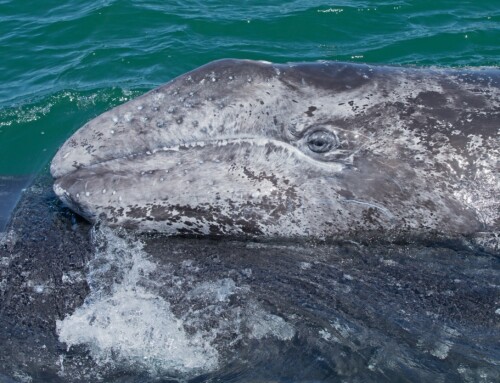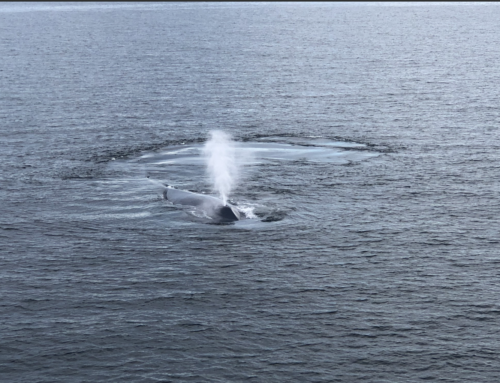It’s Baja California’s “friendly” whales that first attract
many of the people who come here from across the globe.
Eastern Pacific gray whales migrate to Laguna San Ignacio
for mating and calving. Thousands of them gather
between late January and mid-April. We’re honored to be
granted permits from Mexico to share this remarkable
place with our guests, and we make the legendary lagoon-
nursery our home for two days on every Searcher Natural
History Tour.
Due to circumstances no one seems to completely under-
stand, gray whales here—and only here with any regularity
—approach our pangas (small fishing boats) and choose to
interact with humans. Some whales, adults and calves
alike, allow us to touch them on the face and back, and
actually appear to seek out this attention from people.
We’ve been working with local pangueros(fishermen) of
Laguna San Ignacio’s Kuyima co-operative for more than
10 years. We call these men and their families our friends,
and are proud to engage them during the whalewatching
season (when they refrain from fishing so as not to inter-
fere with the whales). Their knowledge of the whales and
the lagoon is vast.
Laguna San Ignacio part of Mexico’s Vizcaino Biosphere
Reserve and is a UNESCO World Heritage Site, which
provides international attention, concern, and protection to
its gray whales, dolphins, fishes, birds, and other wildlife.
Its pristine state is testimony to Mexico’s efforts to pre-
serve and protect the gray whales and their environment.
A large area of the lagoon is protected from boat traffic
during the gray whale season; here the whales can choose
to be away from boats and people. But the huge lagoon
also includes an observation area where Searcher anchors
and where we can board pangas for a closer look.




